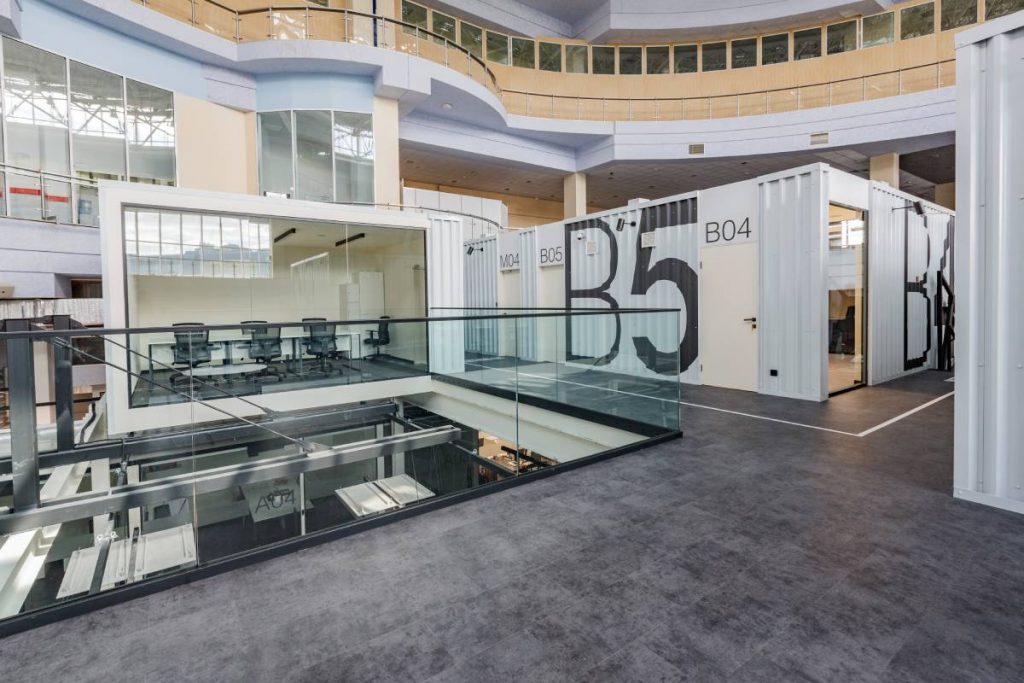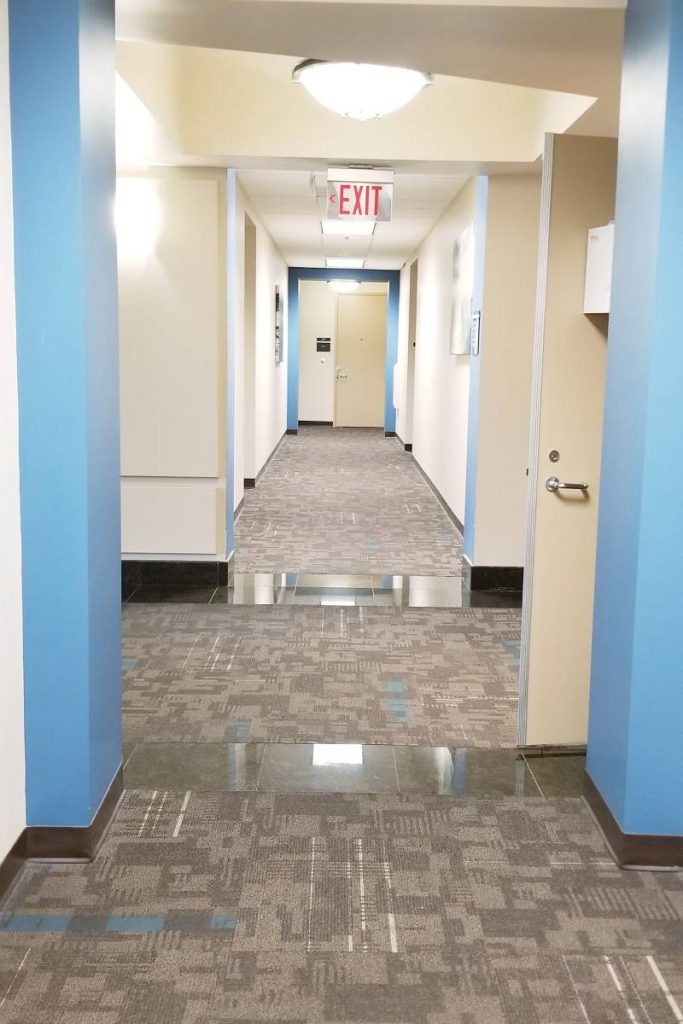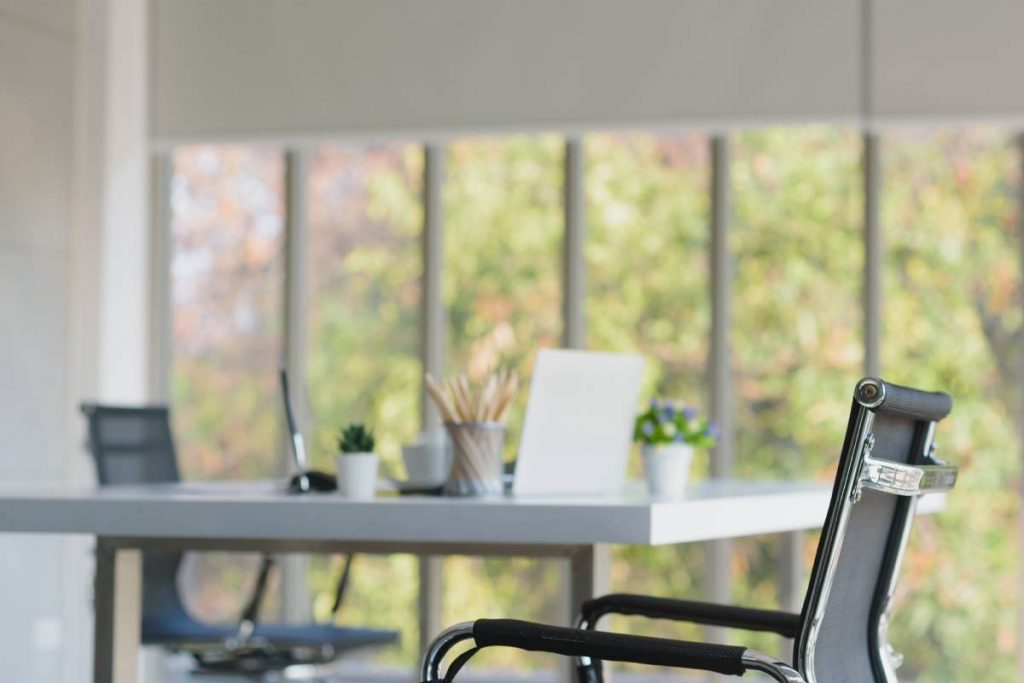Creating a well-designed and functional workspace is essential for any business – and corporate interior design plays a crucial role in shaping the atmosphere, productivity, and overall success of an office.
In this article, we are going to explore the world of corporate interior design, discuss the principles that guide it, delve into different design styles commonly used in corporate settings (and how to effectively implement them), and highlight the benefits that quality interior design services can bring.
Whether you’re a business owner or a freelance professional seeking to revamp your workspace, this article will provide you with valuable insights to help you make informed design decisions that will positively impact your environment.
Let’s straight into it…
What is Corporate Interior Design?
So, what is corporate interior design? Corporate interior design focuses on creating appealing, functional, and efficient work environments that reflect a company’s brand, values, and culture. It involves the strategic arrangement of furniture, colours, lighting, and other critical elements to optimise workflow, enhance employee well-being, and create a positive impression on clients and visitors.
In other words, it is the process of taking a drab and uninspiring work environment and turning it into a beautiful, functional space that people genuinely enjoy working in.

What Are the Principles of Corporate Interior Design?
The key principles that guide corporate interior design are as follows:
- Functionality: Ensuring the space is designed to meet the practical needs of the business and its employees, thus optimising workflow and efficiency.
- Brand Identity: Reflecting the company’s brand values, culture, and aesthetics through the design elements, ultimately creating a cohesive and consistent visual identity.
- Employee Well-being: Incorporating elements that promote comfort, ergonomics, and a positive work environment to enhance employee productivity and satisfaction – all the while keeping them safe from unnecessary health issues.
- Flexibility: Designing spaces that can adapt to changing business needs and accommodate future growth or reconfigurations.
What Are the Different Corporate Interior Design Styles?
Several design styles are popular in corporate settings. Here are a few examples of those that are tried and tested:

- Traditional: Classic and timeless, the traditional interior design style is characterised by rich colours, elegant furnishings, and refined details. It conveys a sense of professionalism and formality.
- Modern/Contemporary: Sleek and minimalist, featuring clean lines, open spaces, and neutral colour palettes. Modern/contemporary design emphasises simplicity, technology integration, and a collaborative work environment.
- Industrial: Inspired by warehouses and factories, it showcases exposed brick, metal accents, and raw materials. This style exudes a sense of creativity, innovation, and relaxed informality.
- Scandinavian: Light and airy, with a focus on natural materials, simplicity, and functionality. It promotes a clean, uncluttered aesthetic, creating a calming and productive atmosphere.
These are a handful of the many interior design styles available to you. The key is to think carefully about your brand and business and the culture you wish to promote in your corporate working environment. When you settle on that, finding the perfect style to introduce into your office will be easy!
How Can You Effectively Implement a New Interior Design Style in Your Office?
Now onto the important question: how can you effectively implement your new interior design style into your office?
Implementing a new interior design style requires careful planning and execution. Here are some key steps to consider before getting started:
- Assess Your Needs: Understand your business requirements, employee preferences, and any specific design considerations unique to your industry.
- Research and Inspiration: Explore design magazines, websites, and social media platforms such as Pinterest to gather ideas and inspiration. Create mood boards to visualise the desired look and feel.
- Engage Professional Designers: Collaborate with experienced interior designers who specialise in corporate spaces. They can provide expert guidance, create custom design solutions, and manage the implementation process.
- Budget and Timeline: Determine your budget and establish a realistic timeline for the design project. Consider any necessary renovations, furniture procurement, and installation timeframes.
- Communication and Collaboration: Maintain open communication with the design team throughout the process. Provide feedback, address concerns, and stay involved in decision-making to ensure the design aligns with your vision.
For the best results, as briefly touched upon, you should hire professionals to help plan and oversee the interior design process.
Can You Improve the Interior Design of an Office Without Investing in a Full Renovation?
Yes, it is possible to enhance the interior design of an office without a complete renovation. Consider these cost-effective options:
- Furniture and Accessories: Upgrade or rearrange existing furniture, invest in ergonomic chairs, and add stylish accessories like plants, artwork, or decorative lighting.
- Colour Palette and Lighting: Repaint walls in a fresh, modern colour scheme to create a new ambience. Improve lighting by adding task lighting or updating fixtures for better functionality and aesthetics.
- Space Planning: Optimise the layout by reconfiguring workstations, creating collaborative areas, or introducing flexible seating arrangements to maximise space utilisation.
- Soundproofing: adding acoustic foam panels to certain areas in your office can significantly reduce noise reduction, thus promoting fewer distractions and a more focused working environment.
You don’t need to make massive structural changes to your corporate interior in order to get the best results. Often, upgrading a few key elements can have a massive impact on the overall look and feel of a space.

What Are the Benefits of Quality Interior Design?
Finally, what are the main benefits of quality interior design? Is it worth all the hype?
Investing in quality interior design services for your corporate space offers the following awesome benefits:
- Enhanced Productivity: Well-designed corporate interiors can improve employee focus, motivation, and overall productivity.
- Positive Brand Image: A thoughtfully designed office reinforces your brand identity and creates a positive impression on clients, partners, and potential employees.
- Employee Well-being: Consideration of factors like ergonomic furniture, proper lighting, and comfortable spaces enhances employee well-being and reduces stress levels.
- Increased Retention and Attraction: A visually appealing and functional workspace can help attract and retain top talent, contributing to a positive work culture.
Conclusion
Let’s wrap this article up with a brief recap:
- Corporate interior design is a powerful tool that influences the productivity, atmosphere, and success of a business.
- By understanding the principles and different design styles, you can effectively implement changes that align with your business goals and values.
- Whether you choose a traditional, modern, industrial, or the many other interior design styles at your disposal, engaging professional designers can bring your vision to life and create a workspace that fosters creativity, collaboration, and employee satisfaction.
- Even without a full renovation, you can make significant improvements by upgrading furniture, considering colour and lighting changes, and optimising space utilisation.
By prioritising corporate interior design, Australian business owners like yourself can create inspiring and functional work environments that drive success and elevate their brand in today’s competitive market.
You must utilise every possible advantage at your disposal and providing an awesome work environment for your employees is critical.





